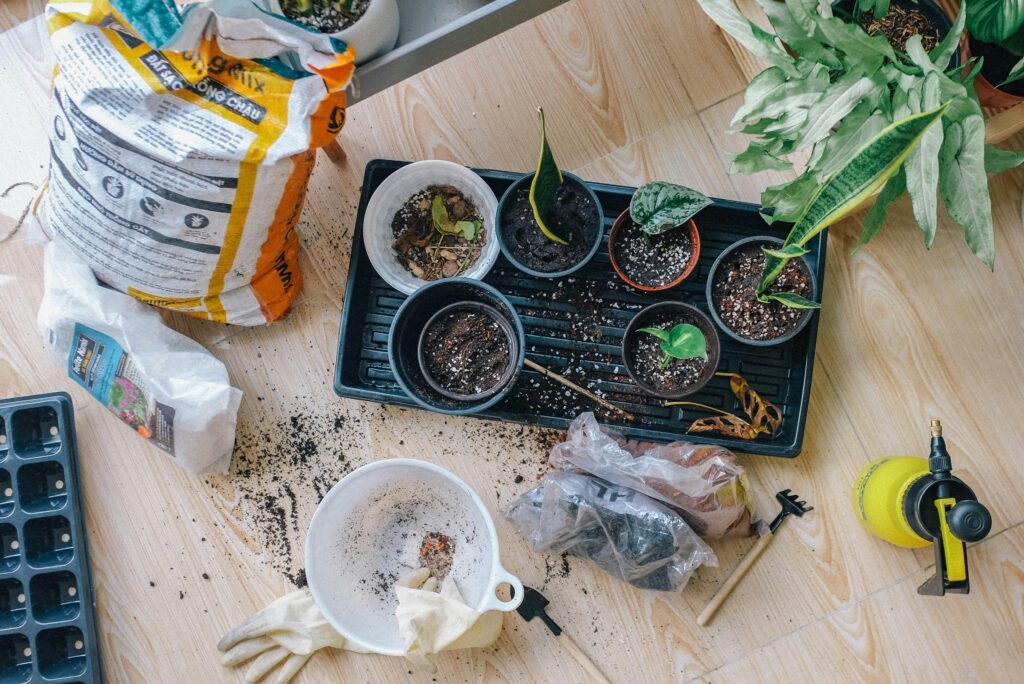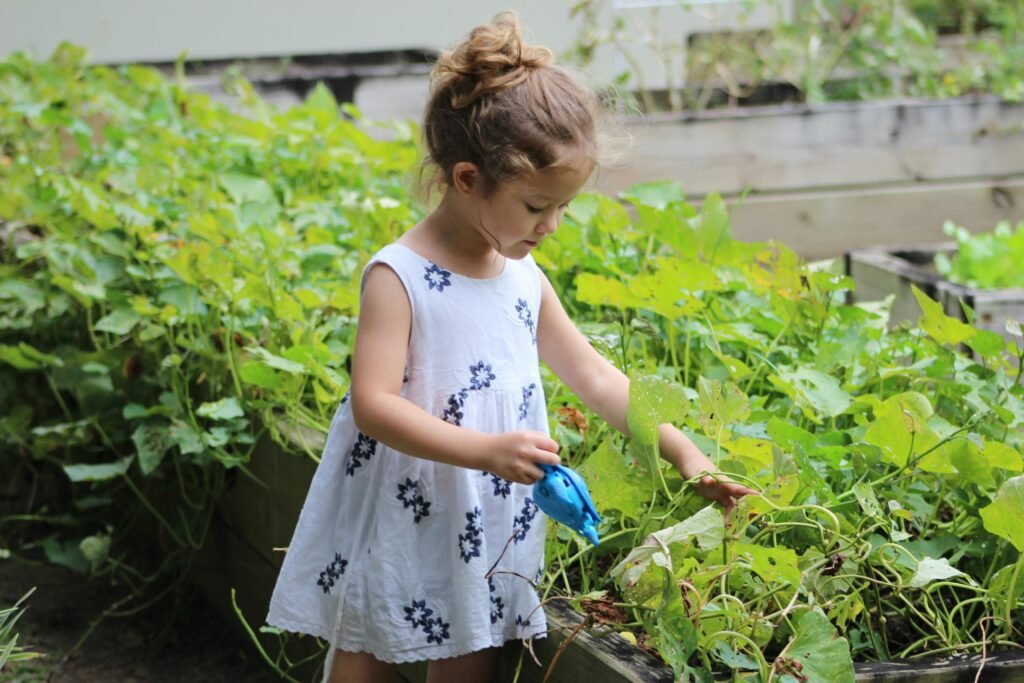Companion Planting Magic

The ’70s popularized the concept of planting “friends” together in the garden to maximize growth, deter pests, and even enhance flavor. For example, planting tomatoes with basil not only makes for a delicious pairing on your plate but keeps the tomatoes safe from pesky insects. Marigolds, on the other hand, are still a go-to for many, as they repel aphids and nematodes. Try experimenting with your own pairings—you might just stumble on a winning combo that feels like it was meant to be.
Eggshells for Extra Calcium
Eggshells are loaded with calcium, which plants like tomatoes, peppers, and squash need to thrive. Instead of tossing them, crush them up and sprinkle them around the base of your plants. Not only does this nourish your garden, but it also acts as a gentle, natural pest deterrent. The rough texture can keep slugs and snails away, so your plants get a little added protection, too.
Upcycled Containers as Planters
Long before the word “upcycling” became a thing, gardeners in the ’70s were turning everything from old coffee cans to broken colanders into planters. The beauty of using what you have around the house is that it adds a quirky, personal touch to your garden. Plus, it’s functional and eco-friendly—just drill a couple of holes at the bottom, fill it with soil, and you’re ready to plant.
Soak Your Seeds

For those who want to jumpstart germination, soaking seeds before planting was a common trick in the ’70s, and it’s still incredibly effective. Soaking helps soften the outer shell, allowing seeds to sprout faster. Just place your seeds in warm water for a few hours, or overnight for tougher varieties, and watch how much quicker they get growing in the soil.
Mulch with Grass Clippings
Mulching is essential, and grass clippings are a perfect free source. Gardeners from the ’70s discovered that using grass clippings as mulch helps retain soil moisture, regulate temperature, and even prevent weeds. Just lay them in a thin layer around your plants, letting them dry a bit first to avoid matting. Bonus: they add a bit of extra nitrogen to the soil as they break down.
Natural Pest Deterrent: The Garlic Spray
In the ’70s, gardeners would often turn to their kitchens for pest solutions, and garlic spray was a fan favorite. A simple mix of crushed garlic, a bit of vegetable oil, and water works wonders as a natural bug repellant. Spray it on plants plagued by aphids, caterpillars, or other pests, and watch them back off. It’s natural, non-toxic, and so easy to whip up.
Coffee Grounds for Acid-Loving Plants
Used coffee grounds are acidic, and in the ’70s, they became a popular, free resource for gardeners with plants like blueberries, azaleas, and rhododendrons. Just sprinkle them around the base of these acid-loving plants to boost the soil’s acidity. As a bonus, coffee grounds add a touch of nitrogen to the soil as they decompose, giving your plants a little extra oomph.
Water in the Morning

The ’70s taught us that early birds catch the healthiest plants. Watering in the morning allows your plants to absorb the moisture before the sun is at its peak, preventing evaporation and giving them a good start for the day. It also helps prevent fungal diseases that thrive in damp, cool conditions, which is key for keeping foliage healthy all season long.
Vinegar for Weed Control
Gardeners in the ’70s swore by vinegar as a natural weed killer. It’s still one of the easiest ways to handle pesky weeds without using harsh chemicals. Just spray undiluted vinegar directly on the weeds (avoid the surrounding plants), and they’ll soon wither away. It’s perfect for patios, pathways, or any area where weeds pop up, and it’s so easy to apply.
Rotating Your Crops
Though it sounds like a farming technique, crop rotation was also popular among ’70s home gardeners to keep their soil healthy and deter pests. By changing the locations of your plants each season, you prevent nutrient depletion in the soil and help control pests and diseases that may have taken up residence. It’s a simple, yet highly effective way to keep your garden thriving year after year.
